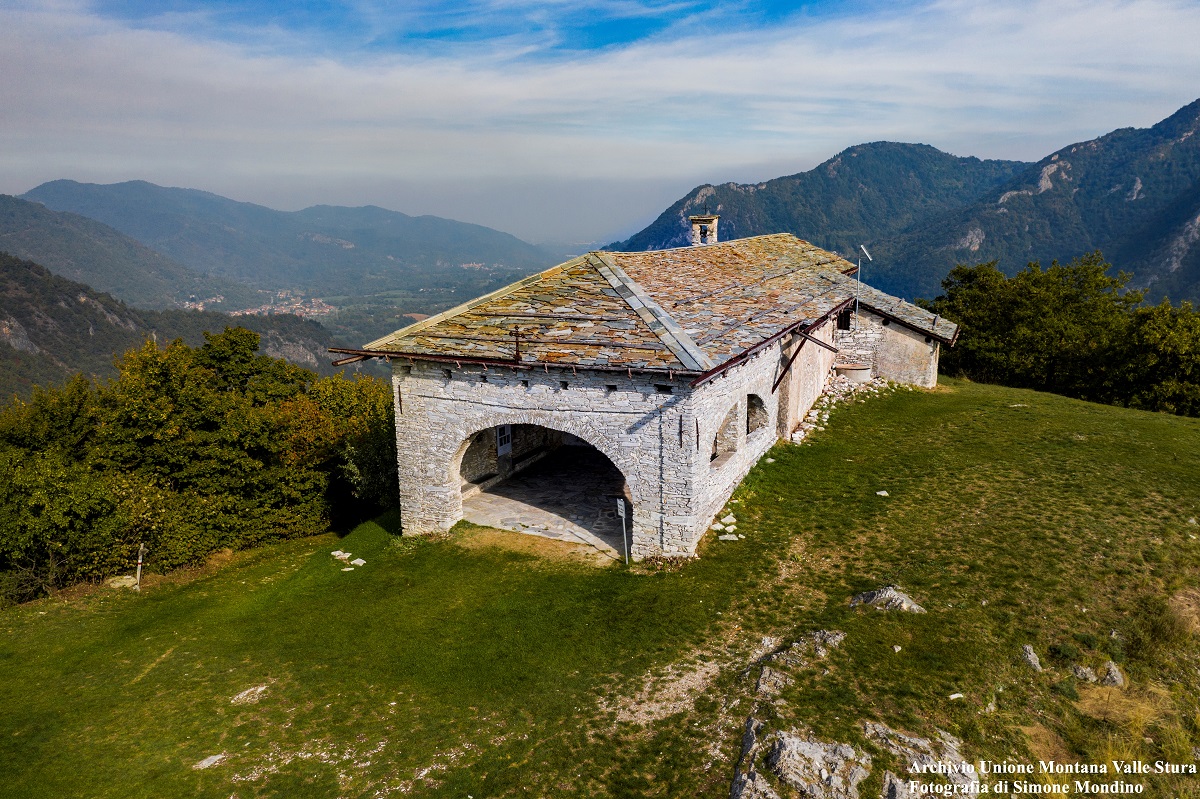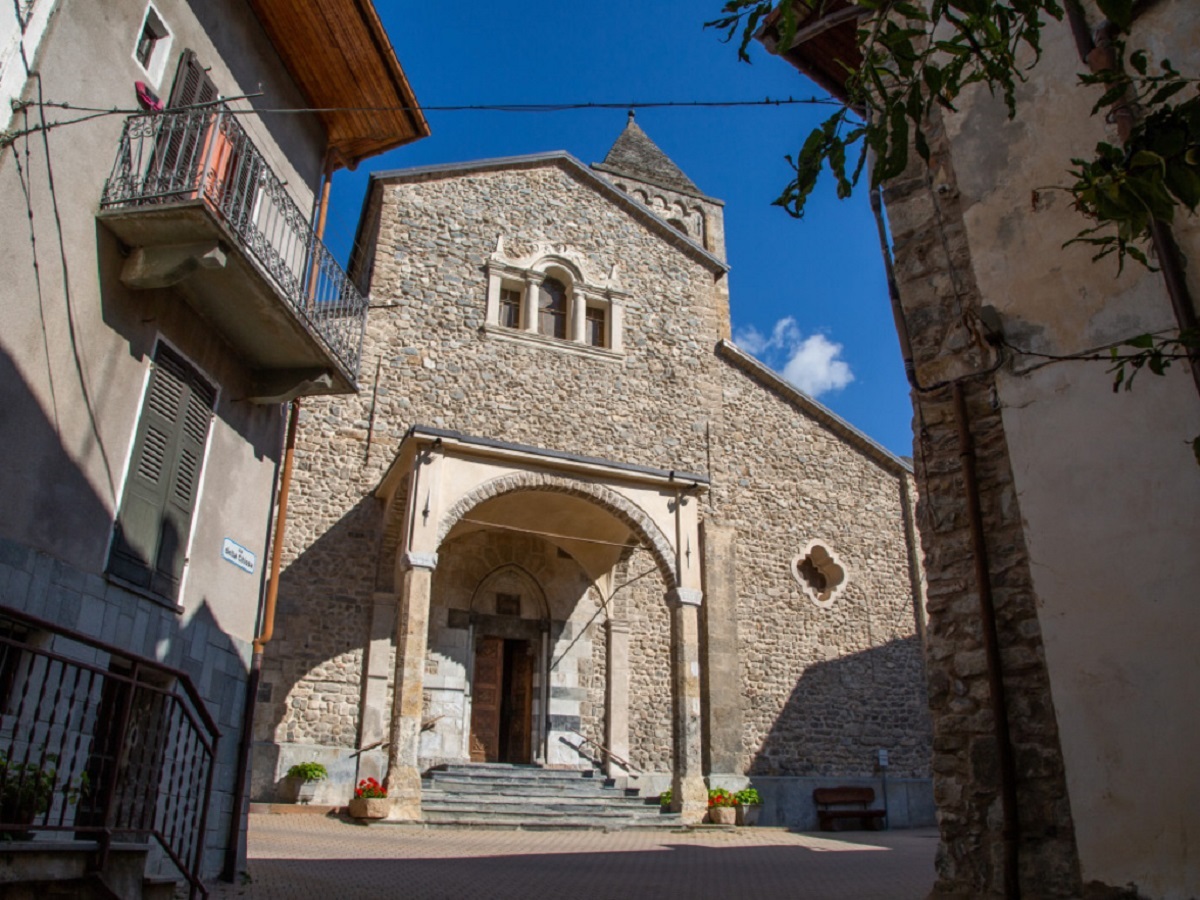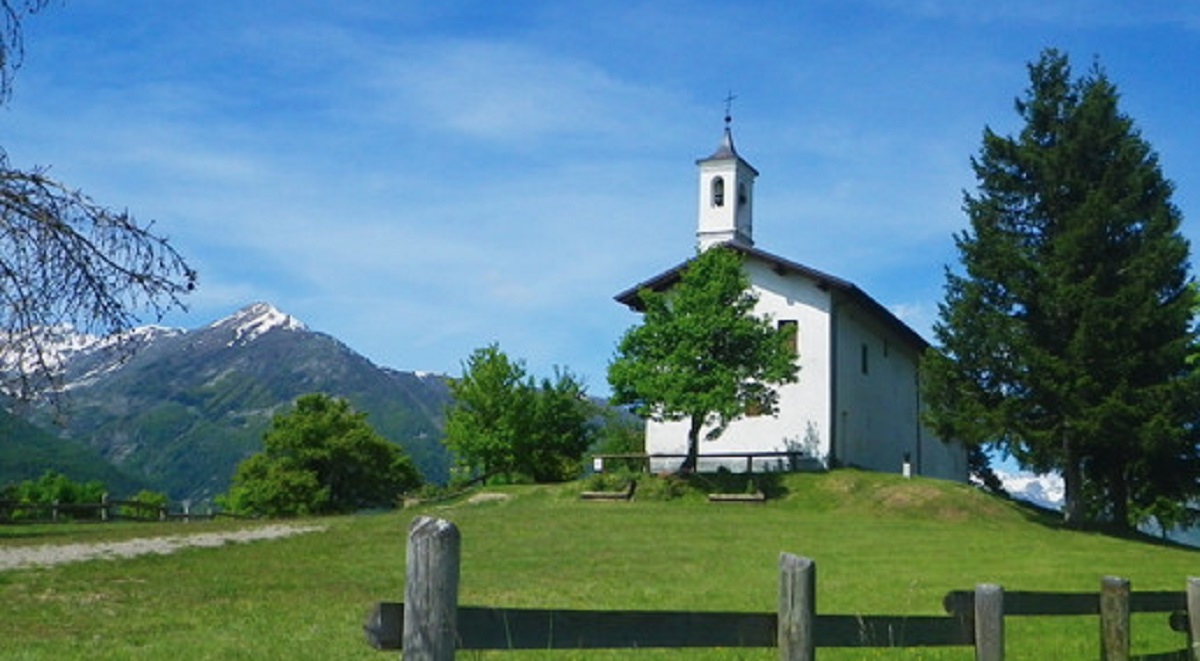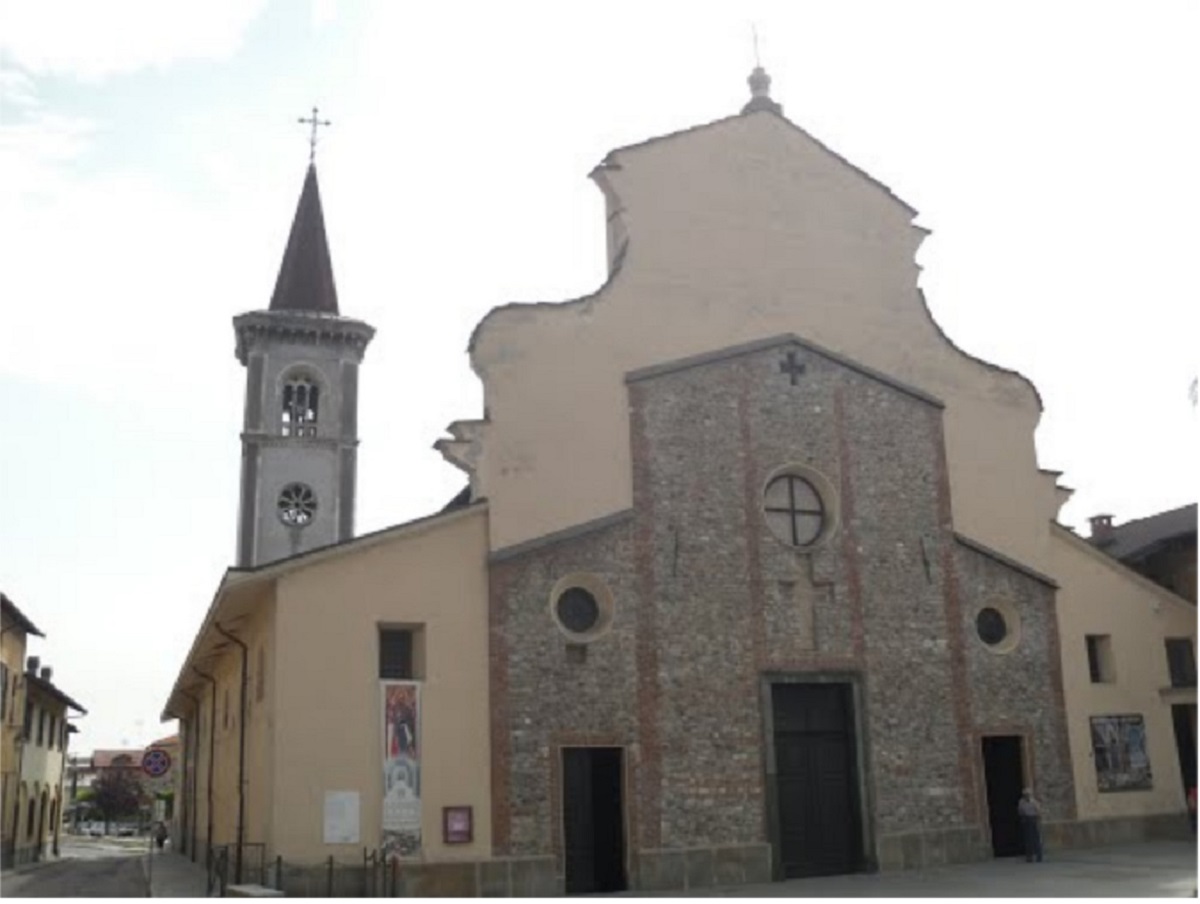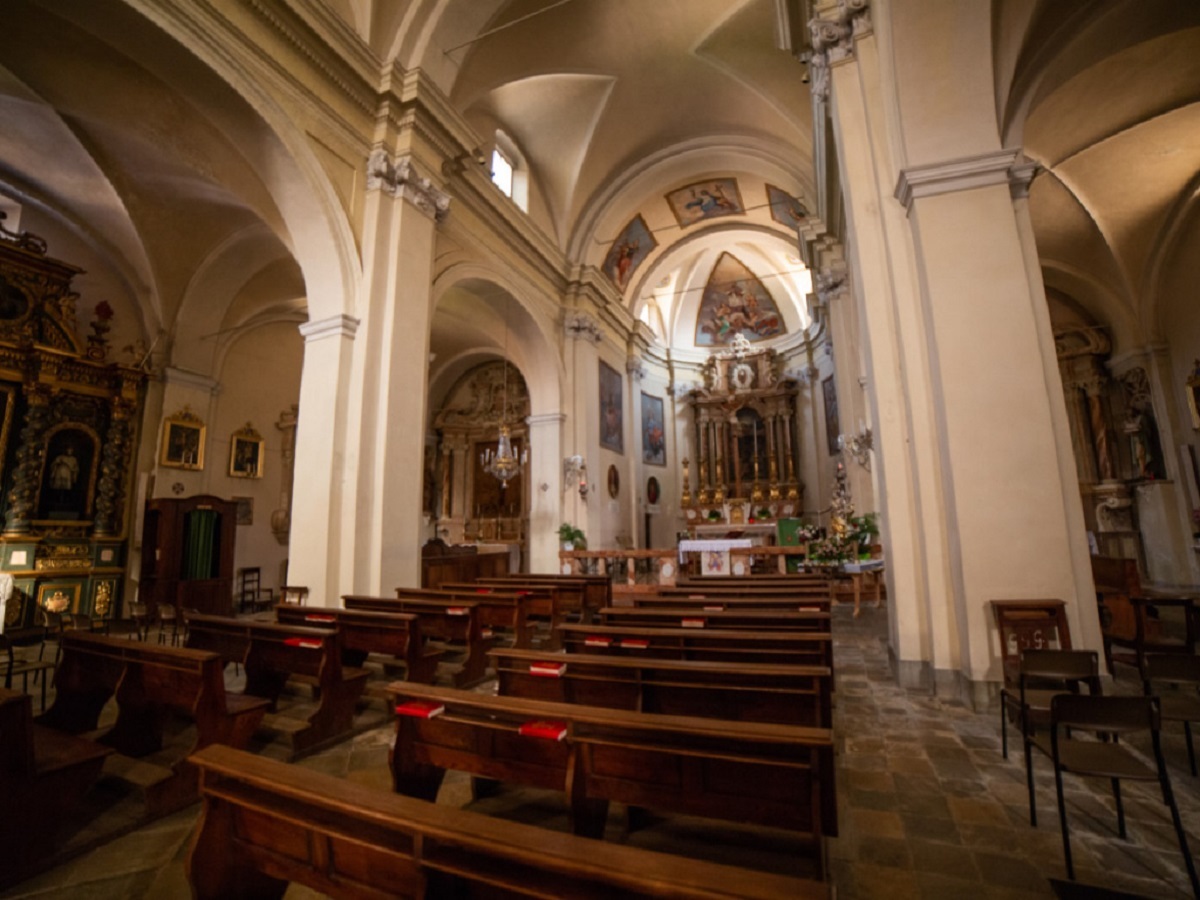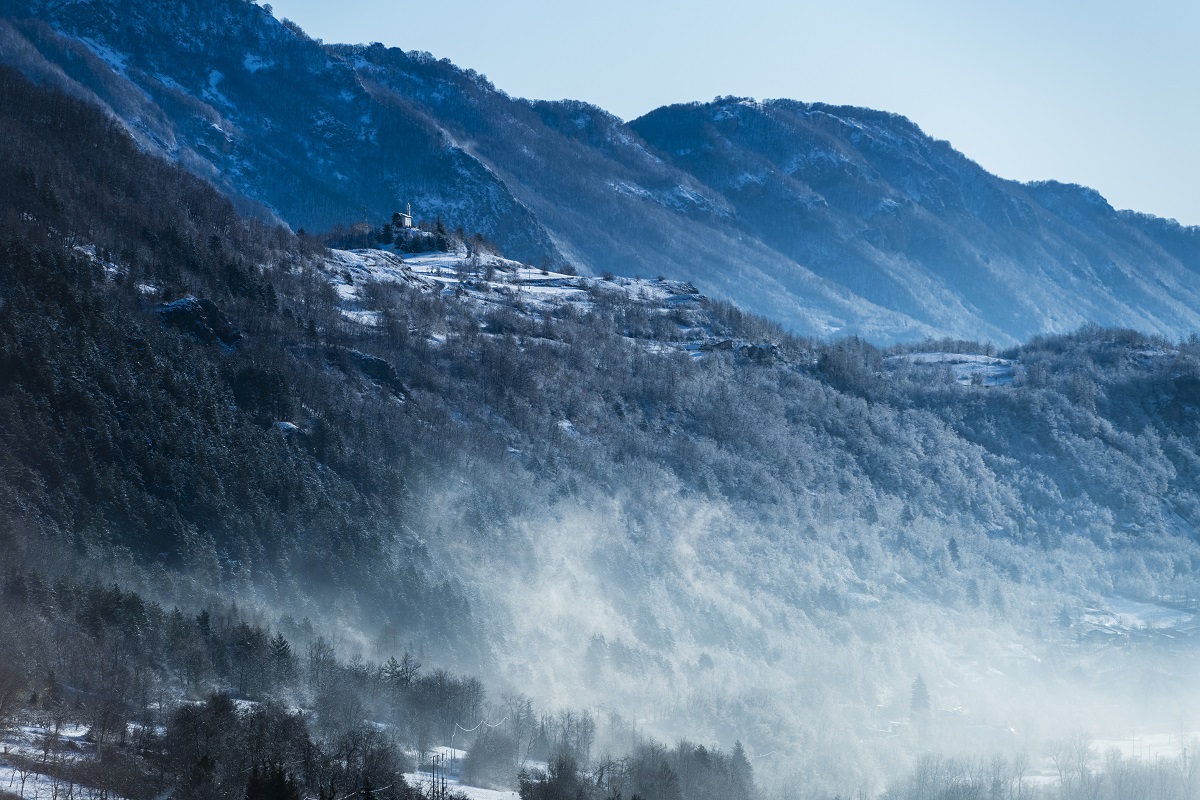The numerous destructions caused by the frequent passage of armies in the war have partially compromised the rich Romanesque and Gothic heritage present in the valley.
The churches, in the past centuries a point of passage and stop for pilgrims who from Provence reached Asti and the via Francigena del Moncenisio, or vice versa, headed towards Santiago de Compostela, were rebuilt by the Benedictine abbots of Auvergne. With the modern age the churches underwent profound transformations and in the valley there was a religious reorganization that promoted the construction of brotherhoods, shrines and chapels.
These sacred buildings offer tourists itineraries that lead to the discovery of small treasures of simple art and at the same time of naturalistic corners of great suggestion.
The abbey of Saint Dalmazzo
The abbey to which the village owes its formation even before its name is remembered for the first time at the beginning of the tenth century, in an act of 902 of which it is now considered acceptable the historical veracity; In fact, in 904 the Bishop of Asti moved to Quargnento the relics of the Saint and the companions, and there remained until 1174.
In the 11th century the monks rebuilt the abbey on a large plan with five naves with three apses, in Romanesque style. In 1259 the Abbot and the Municipality of Cuneo decided to place themselves under the Count of Provence Charles of Anjou: the Angevin dominion ended in 1372 with the definitive passage to the Savoy. The Angevin chapel dates back to this phase with scenes of life and miracles of San Dalmazzo.
In 1439 the Abbey was used as the summer seat of the Bishop of Mondovì, while in 1599 it became a parish and saw the church reduced to three naves, making the outside side chapels still existing.
In 1636 the upper chapel was built, a true sanctuary of the martyr, decorated with frescoes and stuccoes and finished in 1672. It is exposed here the skull bone of San Dalmazzo, contained in a bust – silver reliquary, while the other remains are preserved in a wooden and iron chest.
The altar presents a canvas with the Madonna and Child venerated by Saints Dalmazzo and Biagio of the Piedmontese school, and also the tabernacle is painted with the figure of the martyr.
In 1703 the façade was raised and painted in Baroque style, and so the side chapels and the high altar were renovated. During the French Revolution, between 1793 and 1797, the church was used as a barracks for storing ammunition.
The demanding restoration campaign of the presbyteral area and in some side chapels, implemented since 1995, brought to light the ancient abbey structures.
The chapel of the Assumption
The Chapel of the Assumption, often referred to as Our Lady of the Crowned but locally called “the Madonna”, is located in the town of Moiola and according to tradition was built by the Benedictines in the fifteenth century. The Incoronata was probably built as a votive offering during the Manzoni plague that also hit the Stura Valley. It, in fact, is a small sanctuary on the model of that of S. Anna di Vinadio, located on the southern ridge of the Vallone dei Colli and collects within it many votive pictures of the last two centuries brought up by the inhabitants of Moiola and not.
In the eighteenth century was added the front porch with round arches. Once its care was entrusted to the Confraternity of Santa Croce e del Santo Nome di Gesù, today to the Massari (three men and three women): there is celebrated the patron saint feast on August 15, in conjunction with the feast of Tetti Masuè. In the first days of May the traditional novena is celebrated with departure at dawn from the village and ascent on foot in procession along a path that winds through the woods.
Madonna del Pino
The sanctuary dedicated to the Nativity of the Virgin Mary is located beyond the valley of Fedio, in the municipality of Demonte, in Tetto del Pino. The chapel, from 1664 to at least 1913, would have been the residence of hermits: it would have been built to request protection during the plague of 1630.
Inside there is the statue of the Virgin in gilded wood from the second half of the 18th century. In 1744 two locals were locked up by the French enemy troops in the sanctuary, waiting for the shooting, but during the night they were miraculously freed by Our Lady.
Since 1770, on September 8, a procession around the sanctuary with the statue of the Madonna takes place.
Church of San Fiorenzo
The parish church of Vinadio was erected in 1321 under Pope John XXIII and King Robert of Anjou. Of the Romanesque structure, dating from the thirteenth century, today only the bell tower remains intact. It is built in local stone and was used as a Civic Tower: the top has a spire with a cross, while at the base there is a fountain. The building was rebuilt several times in 1468, consecrated in 1770 by the Archbishop of Turin, who incorporated the bell tower in the right aisle. During the Second World War she suffered some injuries that were repaired in the following years.
In 1986 the bell tower was the subject of an excellent restoration; the facade of the church is preceded by an original protrum formed by two octagonal columns that support a cross-shaped roof. For its construction elements of recovery were used, such as Gothic and Romanesque capitals carved with the coat of arms of the House of Savoy, a Solomon knot, a wolf, spirals and plant motifs.
Of great value are the Gothic portal in dark stone dating back to the early 300 and the lintel supported by animal protomes depicting a bear and a lion. Inside there are three naves with majestic wood of 1500 and 1600 keep tables and statues by local artists.
The church is dedicated to San Fiorenzo, a Benedictine monk of the seventh century AD, perhaps because it was founded by the Benedictines who lived until 1500 in the Valley.

